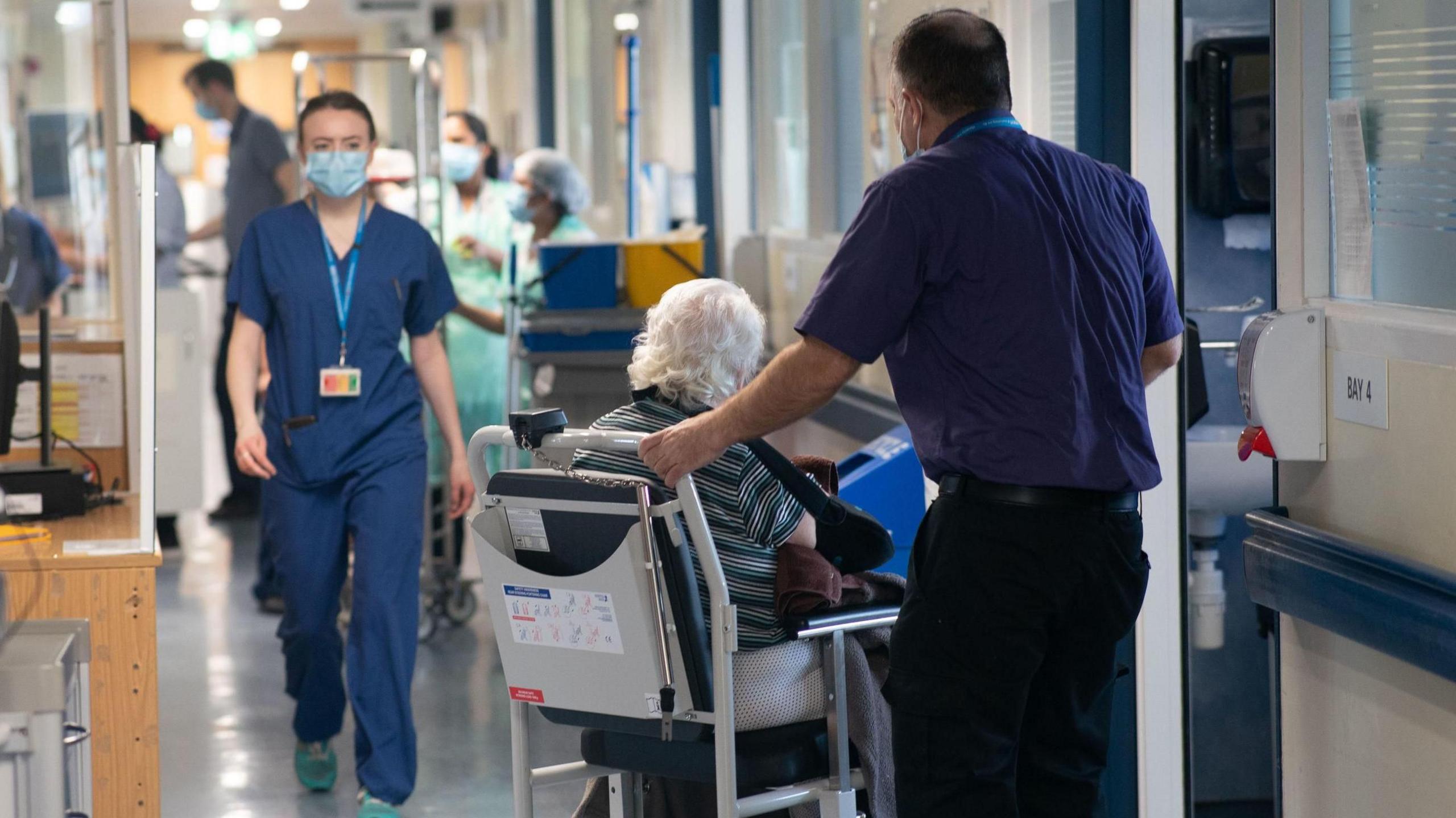Has this hospital cracked its A&E crisis?
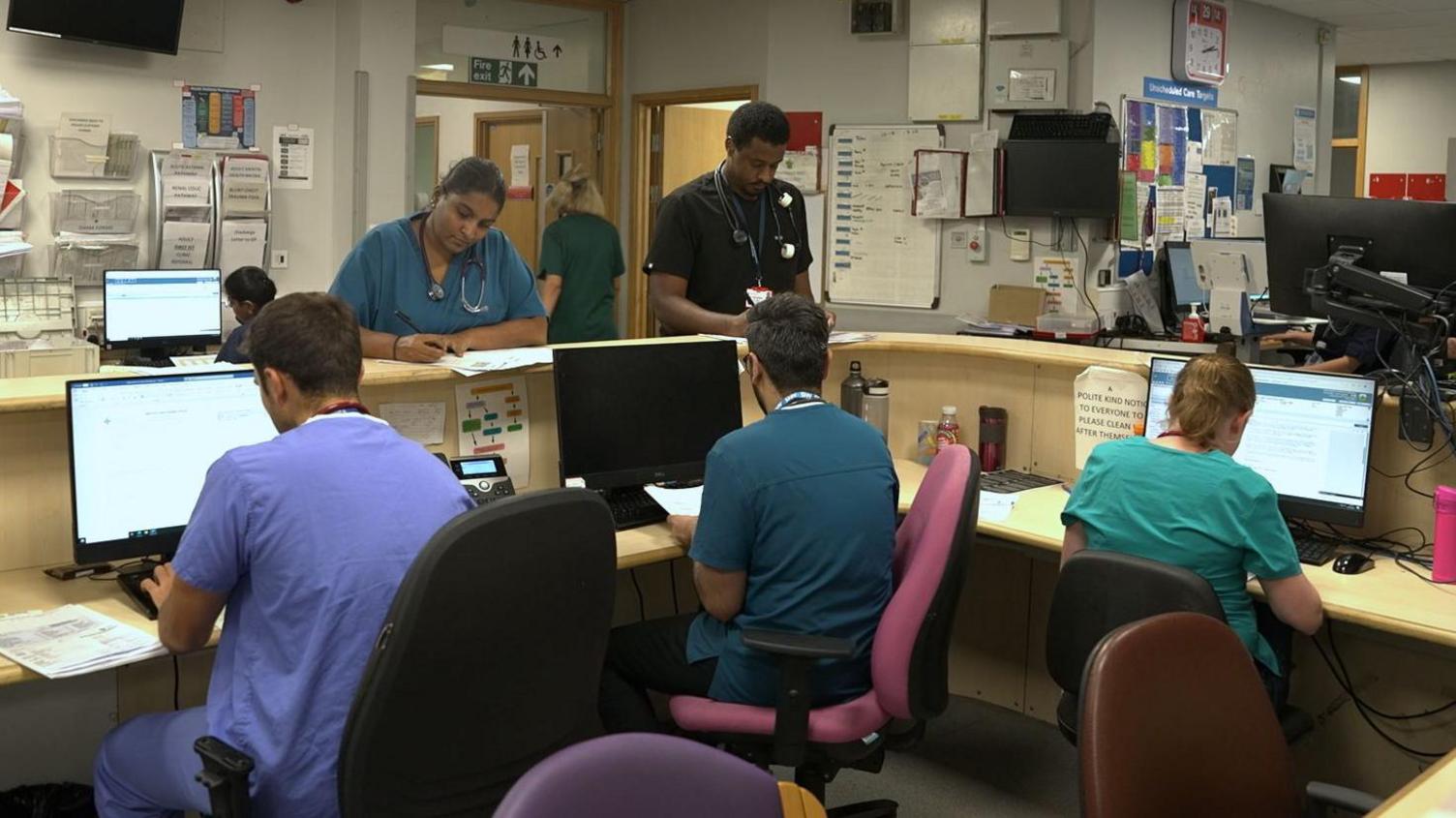
Staff say the A&E department has completely transformed over the past six months
- Published
It's mid-afternoon at Morriston hospital's A&E department and about a dozen staff are trying to stabilise a patient who has arrived by air ambulance after suffering major trauma.
But despite the burst of activity, all feels calm and controlled.
It is a far cry from the chaotic scenes we witnessed here back in January.
Back then, the department was overrun with little space for stressed-out staff to dash between patients lined up on trolleys while eight ambulances queued up outside.
"It's a completely different world," says Callum Allen-Ridge, Swansea Bay University Health Board's head of patient flow, who just six months ago said his job felt insurmountable.
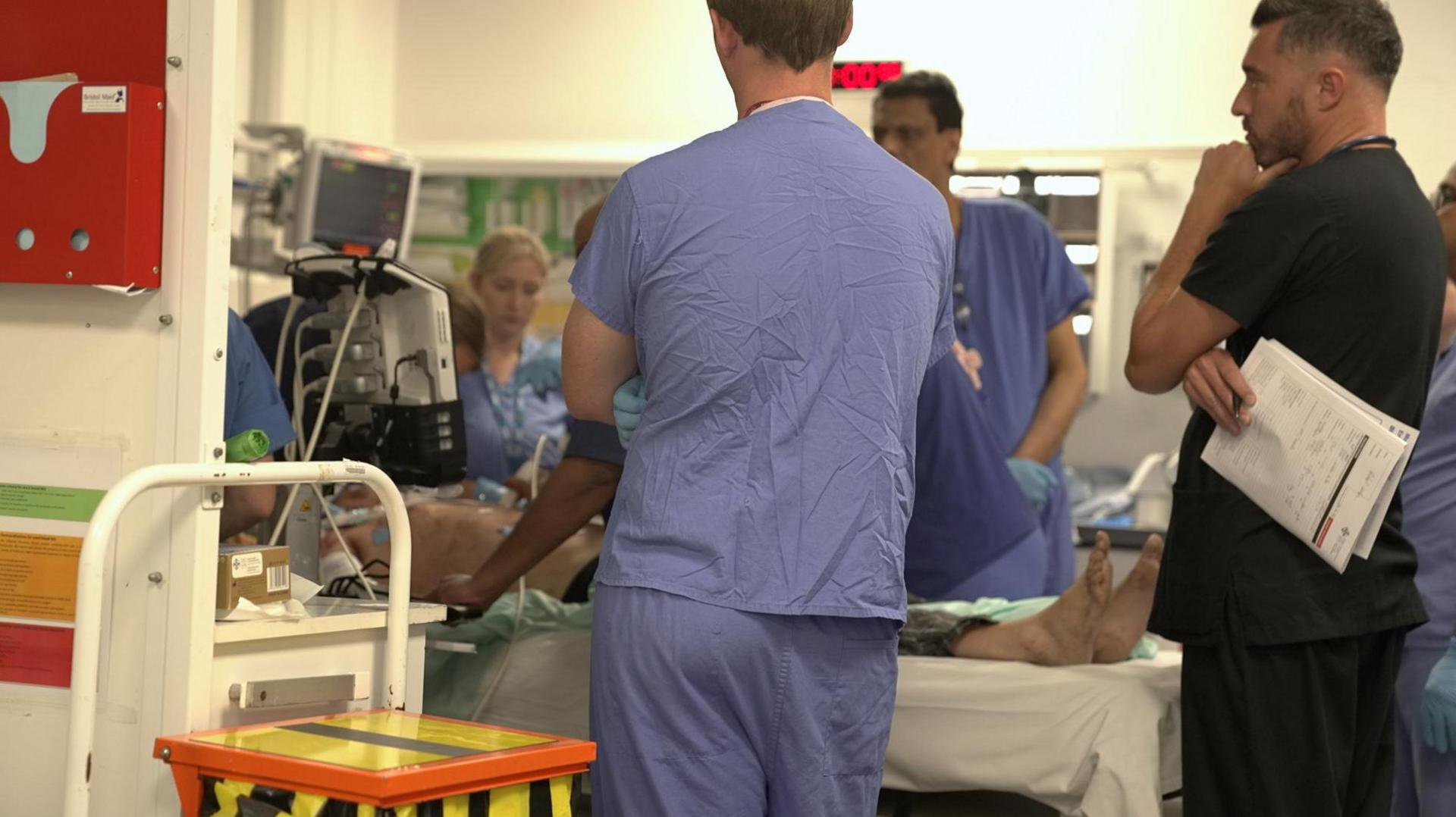
On Tuesday afternoon, staff were dealing with a patient who had arrived by air ambulance after suffering major trauma
When we visited in January, the level of pressure the hospital was under meant it was just below declaring emergency measures.
The jam-packed department had 85 patients waiting for a bed and one patient had been sitting on a hard plastic chair for 44 hours.
On our visit on Tuesday, the assessment of risk level to patients had halved.
Just 11 were waiting for a bed and the longest chair wait was 17 hours.
The health board says a number of changes it has made since January have led to a 127% improvement in its handover of ambulances within 45 minutes, a 72% improvement in lost ambulance hours caused by ambulances waiting outside for their patient to be brought into the department, and a 20% improvement in the number of hours the patient spends in the emergency department.
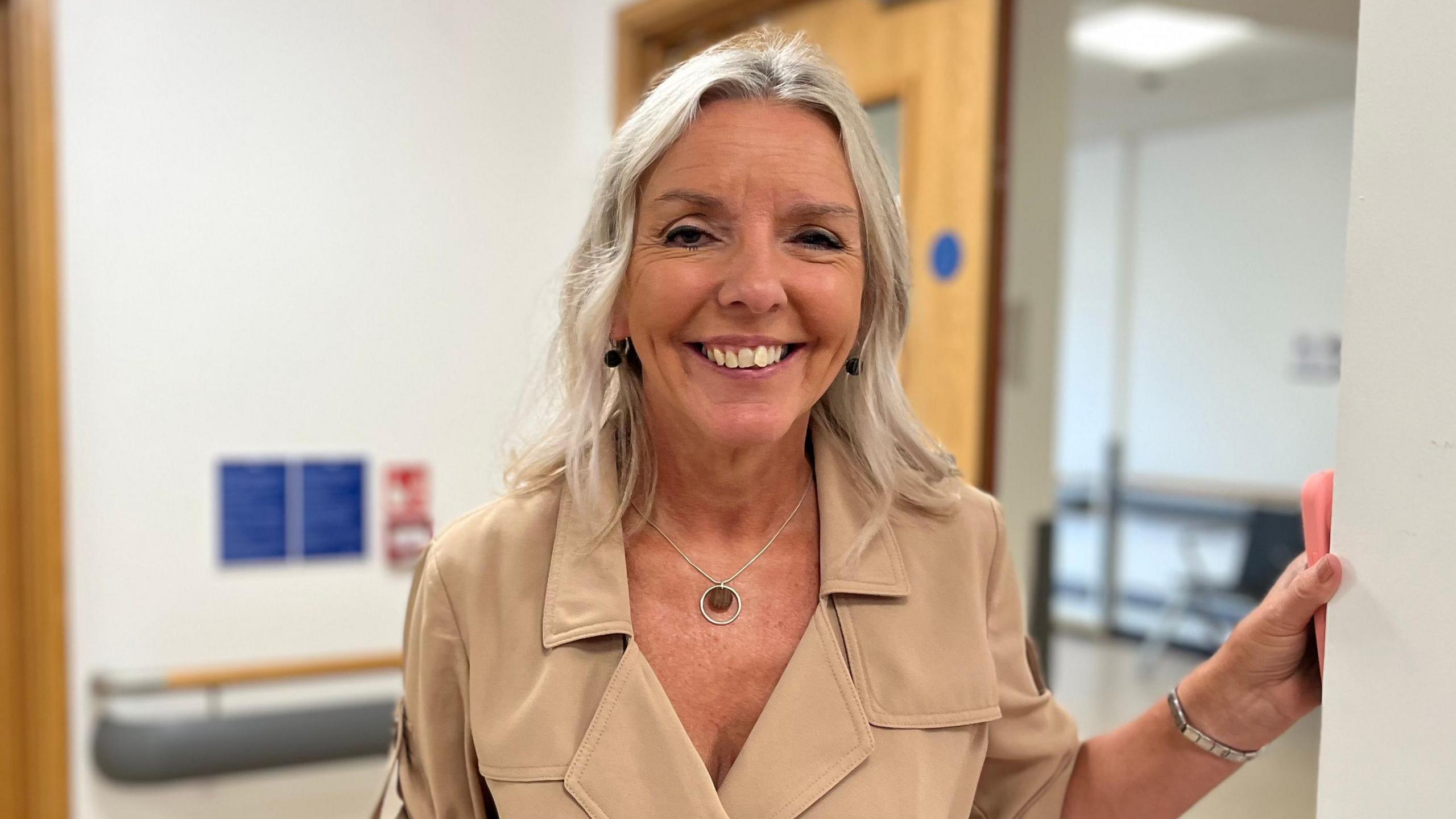
The health board's chief operating officer Deb Lewis says the improvements are down to a number of changes
But surely you can't compare figures from winter and all its known additional pressures with July?
"None of this is a result of demand reducing," insists Deb Lewis, the health board's chief operating officer.
In fact, official data, external shows in January the hospital's A&E department had 6,659 patients attend and that figure went up to 7,287 for June.
"I think July will show it's the same demand," adds Ms Lewis.
"We talk about winter pressures but we know the summer months for us are incredibly busy."
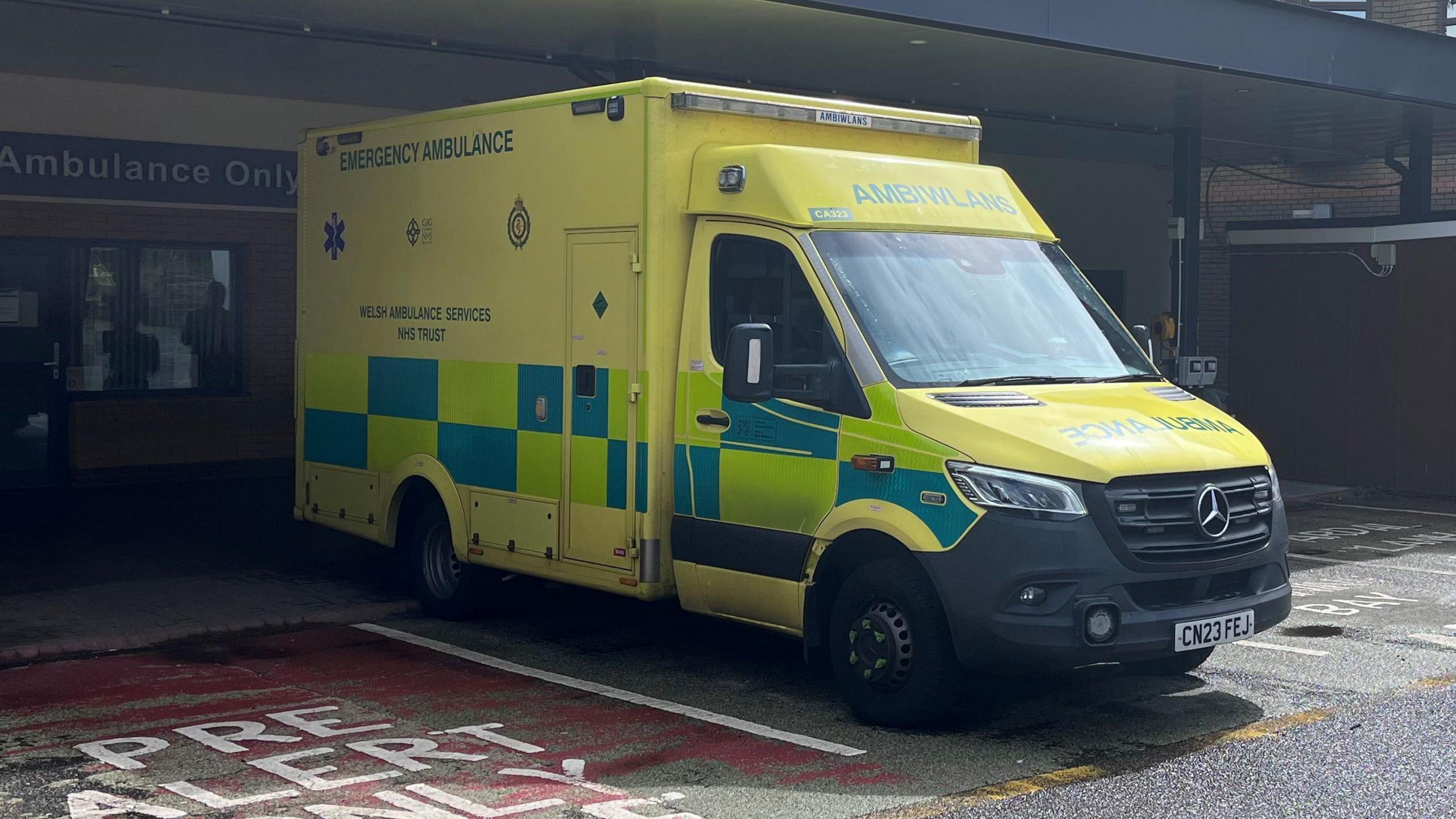
The health board says ambulance handovers are now measured in minutes and not hours
So what changes have been made?
"There is no single thing, it is a combination of probably four or five different processes that we've put in place," says Ms Lewis.
Among the changes are:
Launch of Your Next Patient: This patient flow model schedules two moves every hour from the emergency department to specialty wards. Previously wards would offer up beds to the emergency department based on how many discharges it had planned. Now the speciality wards are told which patients they need to pull into their bed base next, meaning it is the ward's responsibility to pull them out of the emergency department
Taking advice on best practice: The health board has been working with other Welsh health boards to find out what has been working for them and also with NHS England's Getting it Right First Time, external
Building on work with local authority partners to manage patients out of hospital: Launched in July 2024, it is a dedicated team that works with the third sector, local authorities and health board services to resolve obstacles that delay discharge for patients. At its worst, there were 272 patients in hospital that didn't need to be there and there are now about 190
Only admitting patients who need to come into hospital. Ms Lewis says: "We get a lot of patients presenting with more social problems who are not coping at home and sometimes the reaction has been to admit them into a hospital bed because it's easier and it's safer. We don't do that any more. We work with partners to get the patient what they need and where they need it"
Putting senior decision-makers at the front door: Ms Lewis says during the junior doctors strike the hospital was forced to rely more on consultants and realised "if you've got consultants at the front door the decision making is better, it's quicker and you get the patient what they need sooner". As a result they have looked at rosters to make sure they have as much consultant resource at the front door possible
Opened 28 additional beds: In June there was a temporary reallocation of 28 beds on Anglesey Ward for general medical patients with a fixed estimated length of stay

The emergency department's senior charge nurse Tristan Taylor says he no longer goes home worrying about the state of the department
The same staff who in January told us the system was unworkable now say the changes have been transformative.
The emergency department's senior charge nurse Tristan Taylor previously told us he was upset because he couldn't "give the fundamentals of care to all patients" adding that he "didn't come into nursing to give a standard of care like this".
These days his mood is lighter.
"Can't you feel the ambience? It's lot quieter and calmer than what it was when you came back here in January."
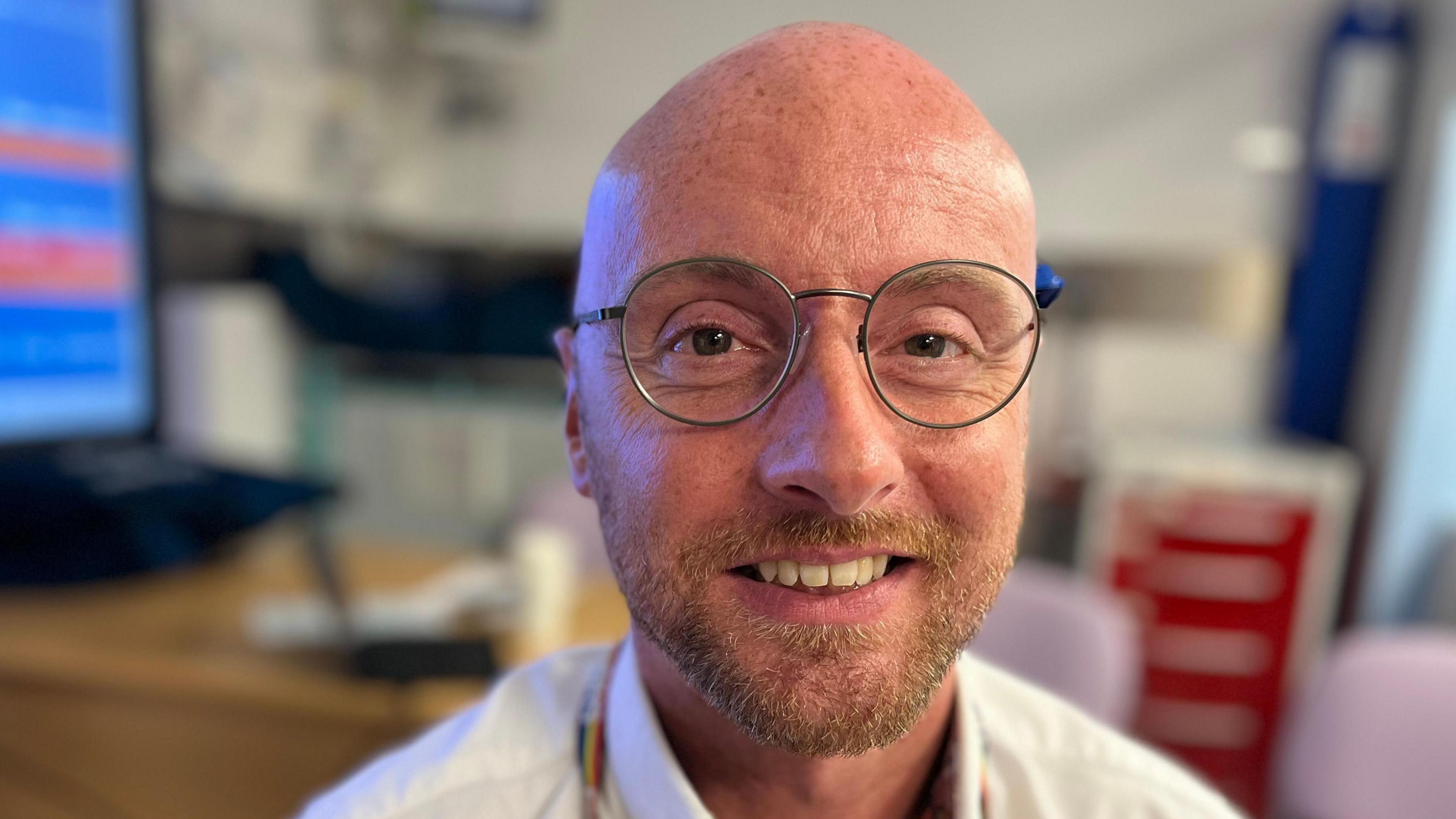
Callum says the hospital is like "a completely different world"
"If there's an emergency incident in one of those bays, we can actually get to the patient, I can actually have conversations with my patients... I don't go home worrying about the state of the department."
Callum previously told us his job managing patient flow felt like "trying to solve a Rubik's cube that's trying to fight back against you".
He says the changes now mean staff are able to smile at work again.
"Six months ago, you'd wake up in the morning not knowing what you're coming into, now it is a pleasure coming into work."
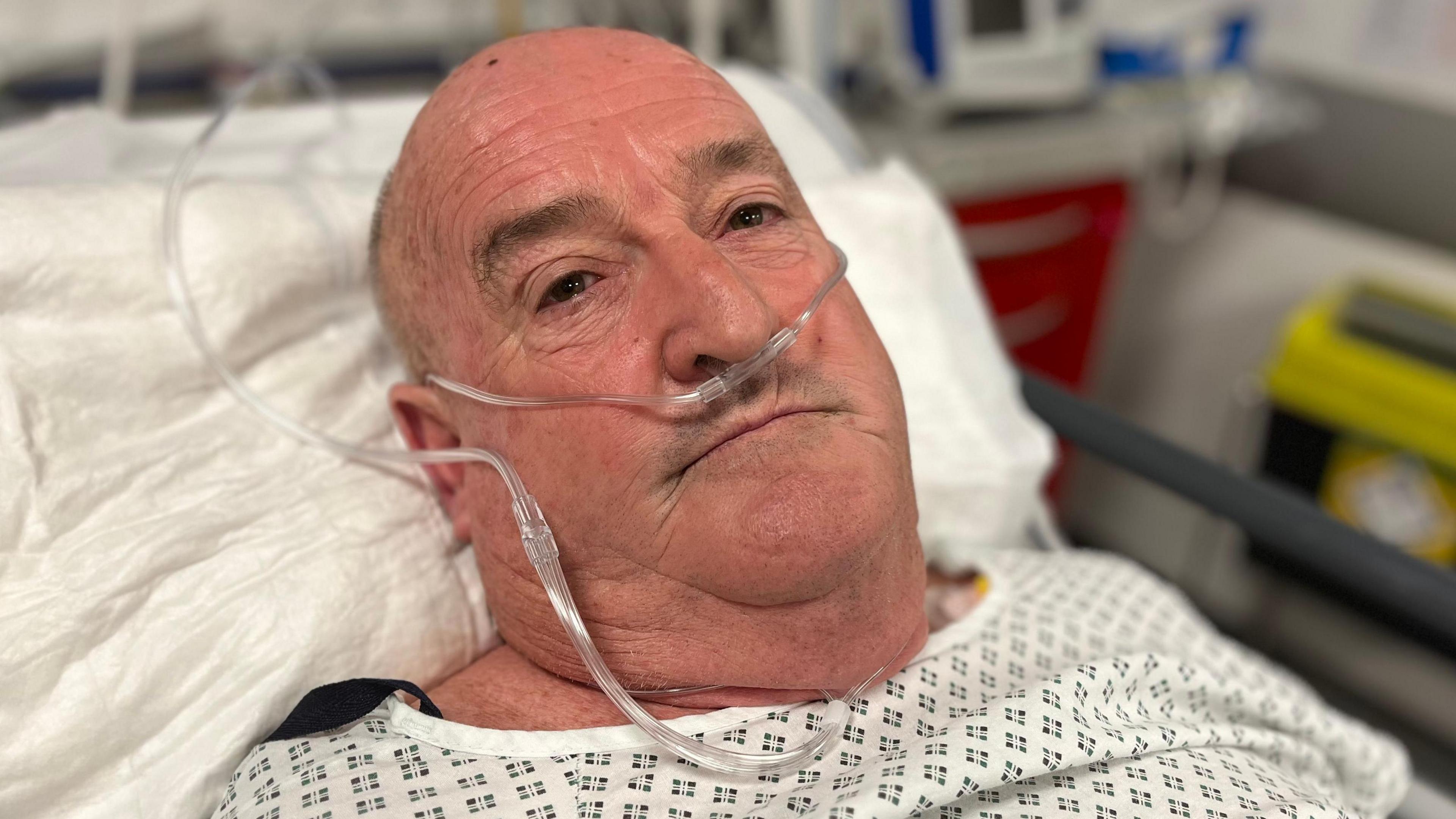
John Hopkins says he was impressed with how quickly he was seen after a fall
The patients we were able to speak to were also upbeat.
John Hopkins, 71, was in resus after falling 16ft (4.87m) off a platform at work on Tuesday morning.
He initially went to the minor injury unit in Port Talbot before he was sent onto Morriston.
"Within five minutes I was with a consultant," he says.
"They said I'd be prioritised but I didn't realise I'd be as quick as this, just straight through."
He says the department is "very calm".
We also speak to Sonia Griffiths, 63, in the hospital's older person's assessment unit.
She was brought to hospital by ambulance after falling from her bed and was waiting for a care package to be put in place before she could go home.
"The staff are very nice, I've enjoyed, it's been good," she says.
"I've been here before when it's really busy and they don't have time but [this time] staff have plenty of time. You can't fault anybody."
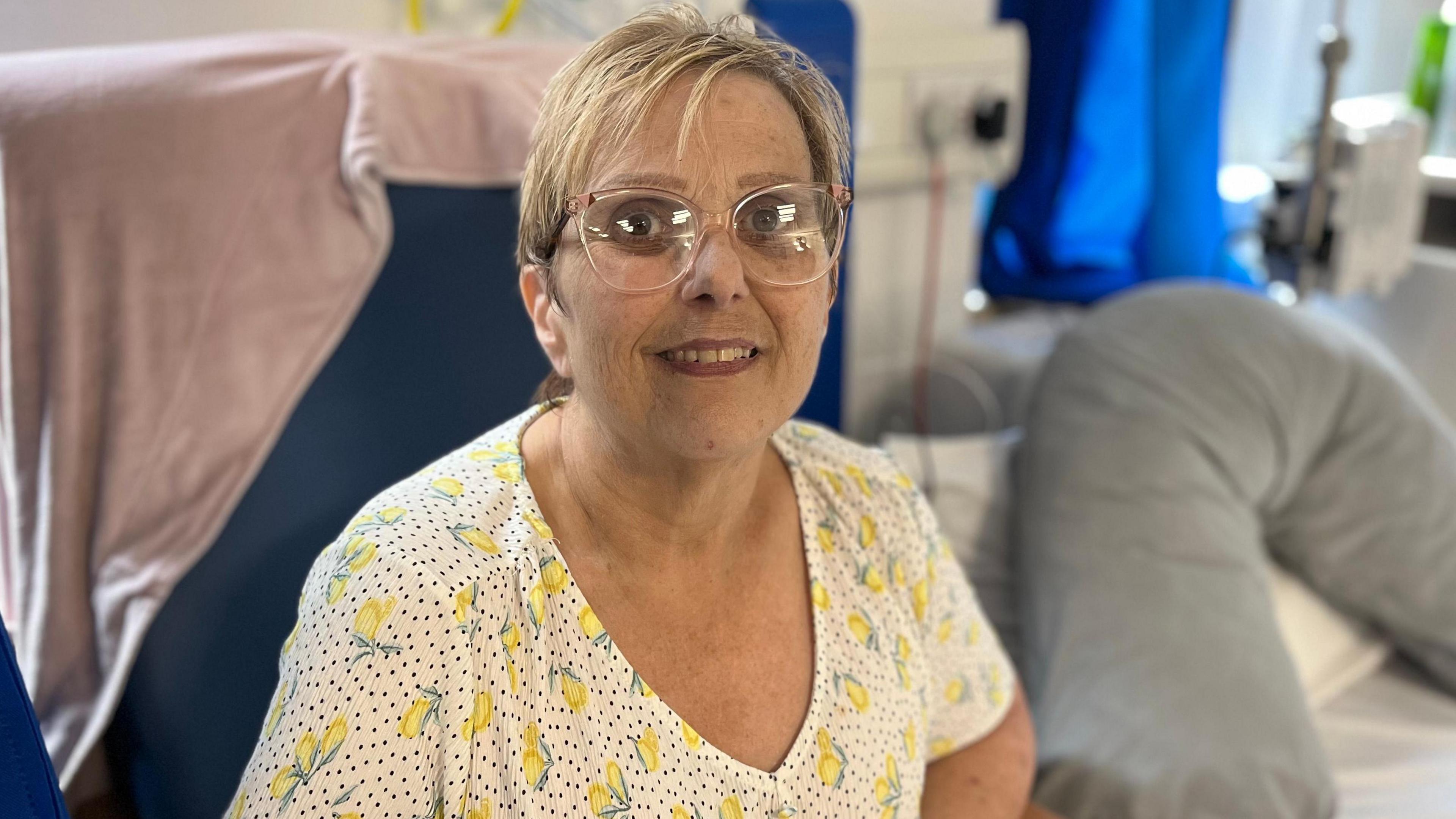
Sonia Griffiths says staff seem to have plenty of time for patients
So has Swansea Bay health board finally cracked its A&E woes at Morriston Hospital?
"Oh, I would never say that," said Ms Lewis.
She said next on the agenda was getting consultants at the front door of A&E seven days a week, further improving the discharge of clinically optimised patients, improving flow through the hospital's acute medical unit, as well as working towards a 15 minute handover target for ambulances rather the current 45 minutes.
Patients are still spending too long in A&E, she says, and she wants to see that brought down to within the 12-hour target.
They also want to look at improving flow through the hospital's acute medical unit.
"I am pretty confident that what we've achieved now is sustainable," she said.
"And we're going to build on that going forward and make further improvements in the overall system."
- Published23 January
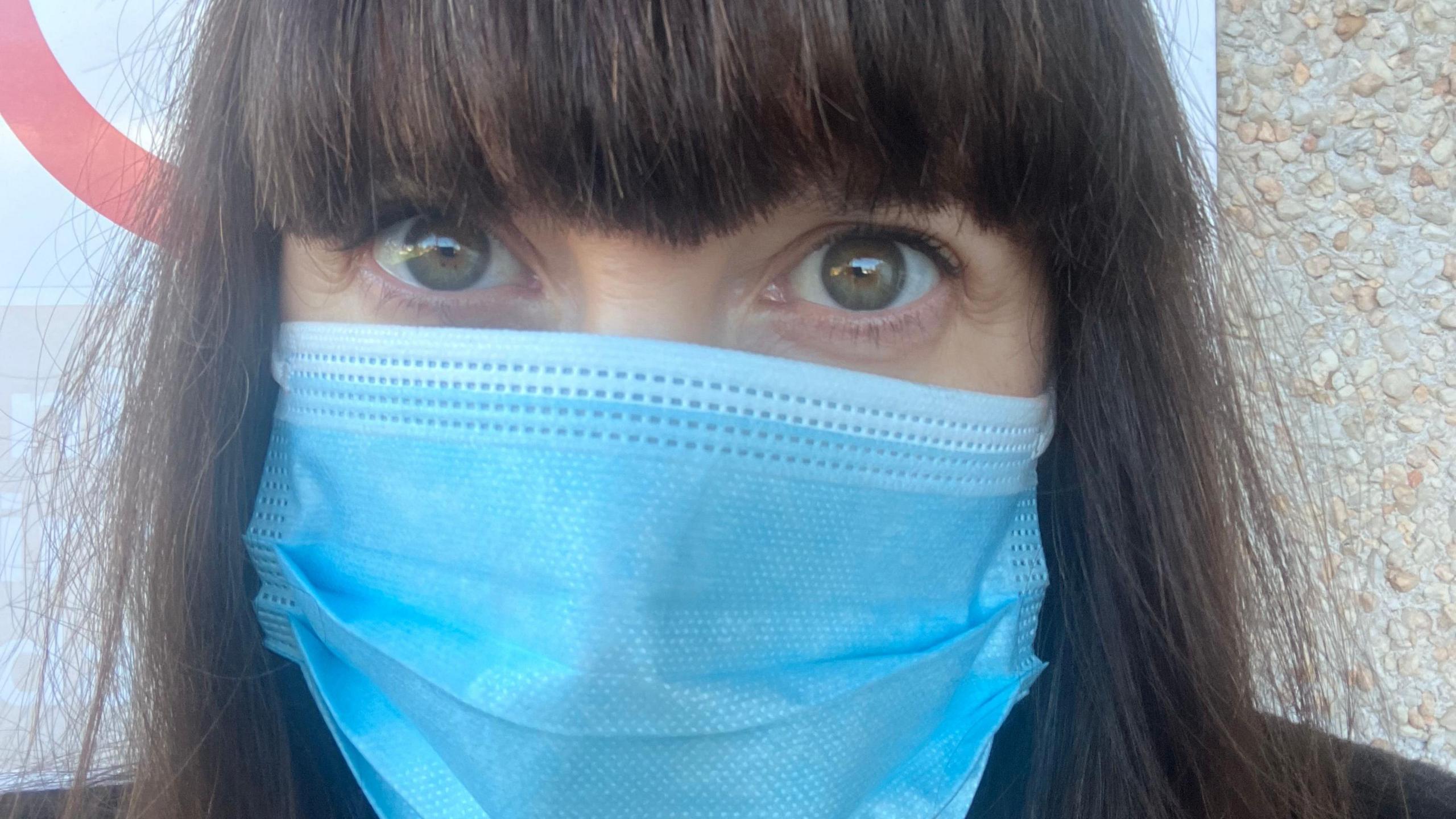
- Published7 March 2024
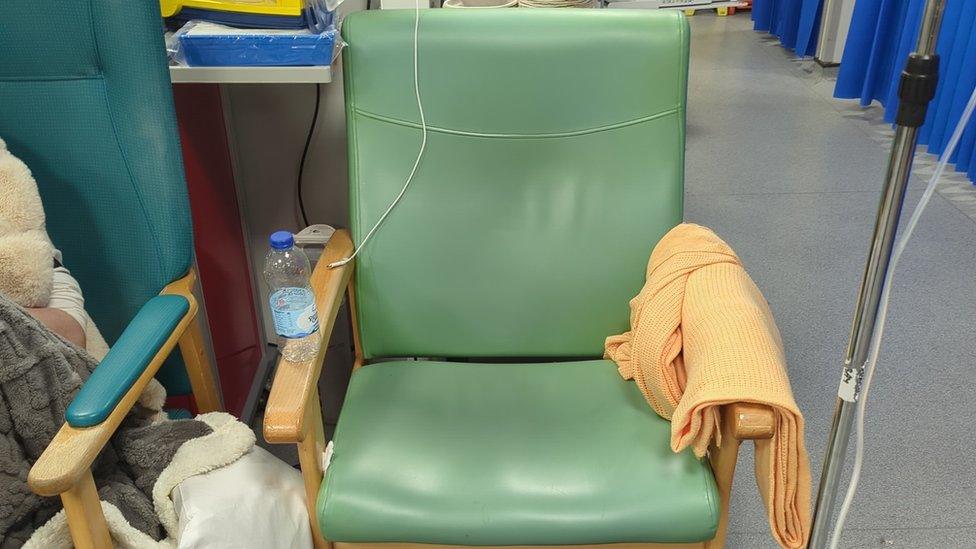
- Published8 January
